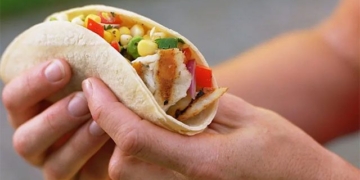The elite indulge in the luxurious trend of gold-leaf cuisine. But what is the purpose of gilding food? Let’s delve into the story behind it.
What is your favorite dish? Braised chicken? Roast duck? Pizza? Pasta? Donuts? Hamburgers? Now, imagine all those dishes covered with a shimmering layer of gold dust, like the pizza shown below.
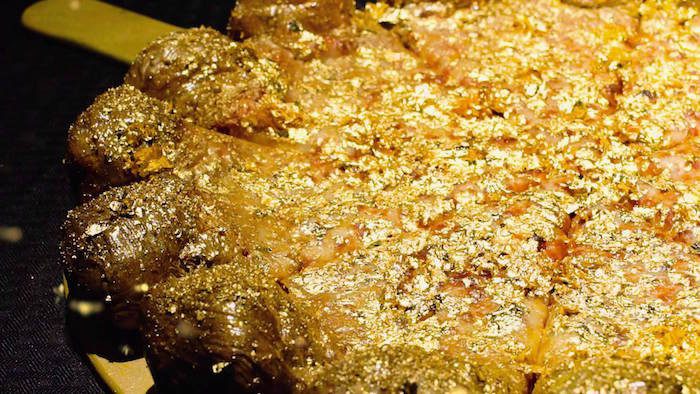
Gold-leaf pizza – would you like to try it?
Yes! These are real dishes, and they represent the extravagant culinary pleasures of the elite. While delicacies like caviar, bluefin tuna, and foie gras might lose some of their allure over time, gold-covered food maintains a special status among the wealthy around the world.
This is precisely why upscale restaurants are always looking to add gold-leaf dishes to their menus. For instance, in New York in 2012, a restaurant launched a campaign called “Douche Burger”, selling a hamburger priced at an astonishing $666 (approximately 15 million VND at current exchange rates). This burger consisted of Kobe beef stuffed with foie gras, Gruyere cheese, topped with caviar, wrapped in mushrooms and lobster, and finally adorned with six sheets of 24k gold.
It’s unclear if it tastes good, but with those ingredients, this burger might actually be worth the price. The Douche Burger is currently the most expensive burger in the world.
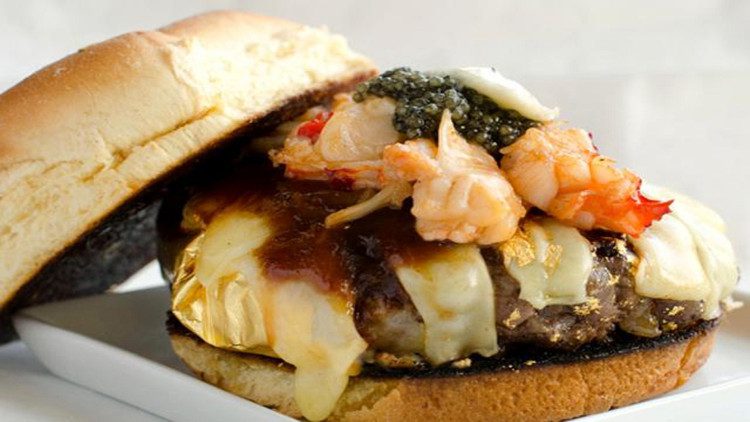
The Douche Burger priced at $666.
But ultimately, why do people gild food? Does gold provide any benefits, and when did gilding food begin?
The History of Gold in Food
The earliest evidence of gold being used in food dates back to ancient Egypt, in the 2nd millennium BC.
The ancient Egyptians consumed gold for its divine qualities. The skin of their gods was depicted in gold in murals; tombs and coffins of the Pharaohs were also decorated with gold. Thus, they believed that gold was the flesh of the gods, and by consuming it, they would receive blessings from the divine.
Ancient civilizations in the Far East also consumed gold with a similar purpose: to seek favor from the gods.
In his travelogue “Il Milione,” explorer Marco Polo wrote that Eastern civilizations ate gold as a way to connect with the divine. Like the Egyptians, they believed that consuming this precious metal would attract the favor of the gods.
In the East, the practice of eating gold was more secular and less about the divine. Ancient Japanese people used gold to decorate food, with sake bottles shimmering with gold flakes and special dishes dusted with radiant gold powder.
The tradition of “eating gold” made its way to Europe during the Middle Ages when the nobility hosted extravagant feasts.
One of the most lavish banquets recorded in history was the wedding of Violante, daughter of Gian Galeazzo Visconti, the Lord of Milan (Italy), in 1386. Guests were treated to over 30 dishes, all completely gilded.
A similar gold decoration was used at a banquet honoring Prince Bisignano in Venice in 1561, where gold was applied to bread and oysters.
At that time, royal courts in Europe also gilded food as a display of opulence. On Queen Elizabeth I’s table, oranges, pomegranates, dates, figs, and grapes were all adorned with a lavish layer of gold powder.
The use of gold as a food additive continued for centuries but nearly vanished after the 17th century. It was revived in 1981 by chef Gualtiero Marchesi.

Saffron risotto decorated with gold leaf. (Image: Goldchef).
This renowned Italian chef invented a saffron risotto topped with a thin sheet of gold. With this dish, gold regained its status as the “king” of high-end food decoration.
Famous chefs, mixologists, high-end bakers, chocolatiers, and distillers have celebrated the revival of gold on a global scale, making this precious metal a popular ingredient in high-end cuisine of the new millennium.
While in ancient times, gold was consumed for religious purposes or health benefits, in modern times, people eat gold-leaf dishes to experience a sense of luxury and novelty.
Does gilding food make it taste better?
This is somewhat true, but only from a psychological perspective. According to a study from Oxford University, the presentation and decoration of food can significantly impact our taste and dining experience.
If food is artistically presented, people tend to enjoy their meal more fully.
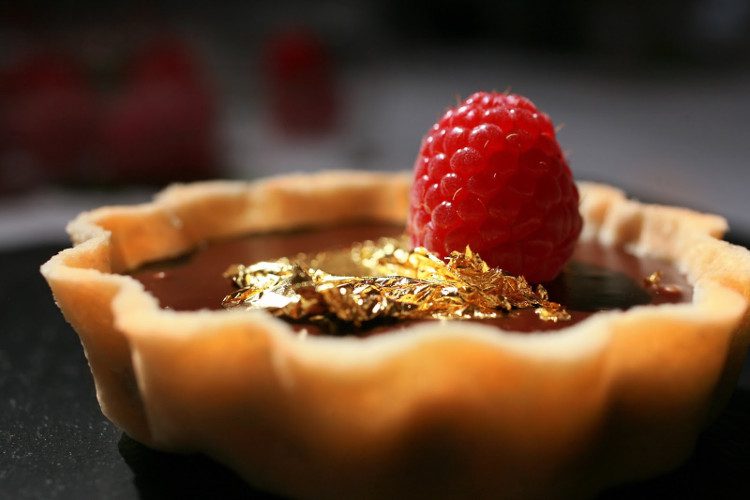
A piece of cake valued at $70 (over 1.5 million VND) just because of the 24k gold flakes sprinkled on top.
This means that if gilding food is considered beautiful, the dining experience is likely enhanced as well.
However, this effect can occur even without the use of gold, so it can be said that gold does not play a significant role here.
So why do people gild food?
It is important to clarify that delicacies like caviar and foie gras are expensive due to their flavor, production effort, and nutritional value.
Many believe that gold is similar, that it is good for health and should be consumed. But no! Gold has no flavor when eaten, and its nutritional value is almost non-existent. It is added simply because it is gold, and gold symbolizes wealth and luxury.
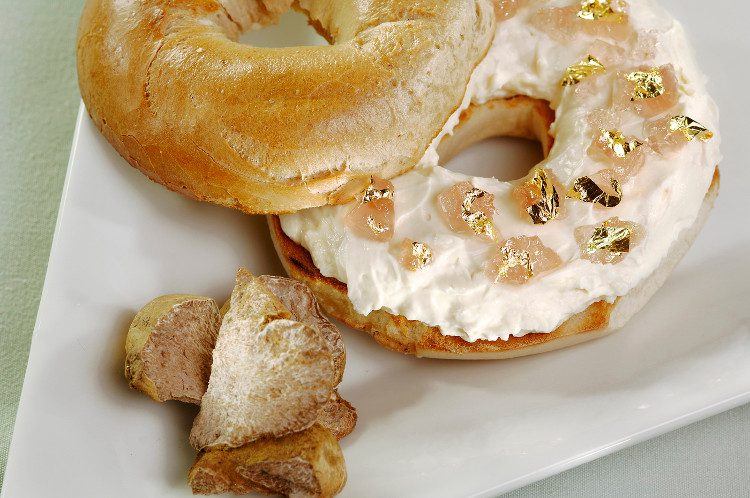
A bagel topped with premium cream. However, adding gold flakes has elevated the price of this bagel to $1,000 each – equivalent to over 22 million VND.
The practice of gilding food dates back to the Middle Ages in Europe, during lavish feasts of the elite. This was a time when society was starkly divided between the rich and the poor. The poor remained poor and starving, and no one cared. Meanwhile, the wealthy sought ways to flaunt their riches. They chose to host extravagant banquets featuring three essential elements: wine, women, and gold-laden food.
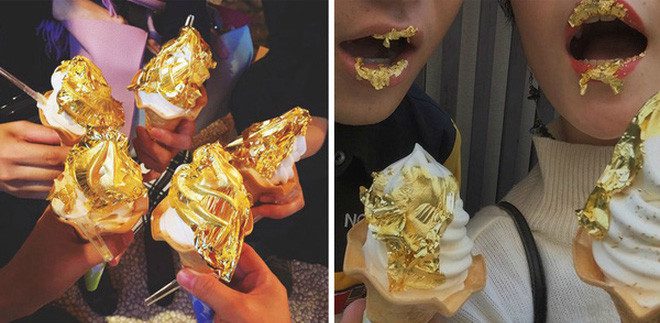
Luxury gold-leaf ice cream.
Therefore, it can be said that gilding food ultimately serves to indulge in wealth rather than providing any real benefits. In fact, swallowing gold can sometimes lead to undesirable consequences.
How does eating gold affect health?
Essentially, gold is a precious metal that is almost impervious to chemical change, so once it enters the body, it is safely excreted during bowel movements.
According to the European Food Safety Authority (EFSA), gold used in food is known as Aurum metallicum, a luminescent metal, and is officially approved as a food additive under the designation E175. It is considered a yellow coloring agent, functioning like any other food additive and coloring agent.
Edible gold and gold for jewelry are not the same. Gold used in food must be 100% pure, and it must be truly refined to ensure safety for consumers.
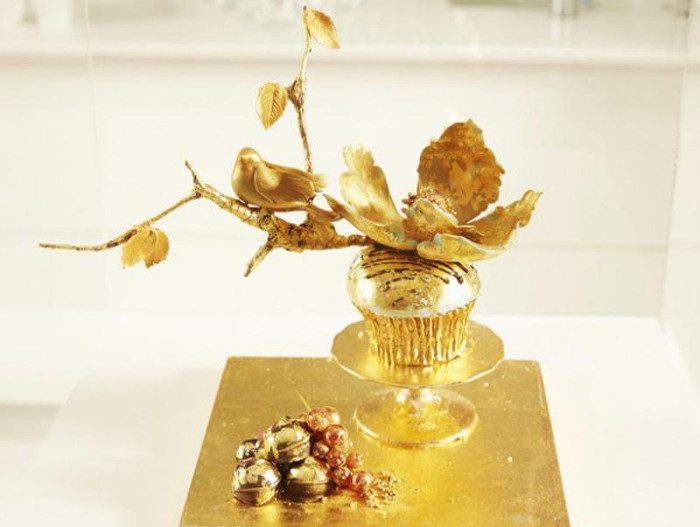
The ultra-expensive cupcake priced at $1,300 each (about 27 – 28 million VND).
Consuming a small amount of gold is considered safe for most people. Regulatory agencies such as the U.S. Food and Drug Administration (FDA) and EFSA have approved certain forms of gold suitable for food processing. Among these, the most common are flakes and sheets used for food decoration, while less common are powder and spray forms.
Scientifically, gold is inert to all chemicals in the body, meaning it will not be broken down. Once gold enters the body, it is not digested and is excreted unchanged.
However, gold has no flavor when consumed and does not provide any nutritional benefits. Gold leaf applied to food does not enhance the taste; its primary role is to make dishes appear “glimmering” and to add an element of luxury to the meal.
Although gold is a non-reactive metal, excessive consumption of gold over a prolonged period can lead to some harmful consequences for the body.
Gold crystals can combine with proteins in the immune system, causing the system to become heavier and altering the structure of these proteins. Consequently, the immune system may identify these proteins as foreign agents, leading to allergic reactions that can result in itching, irritation, and even difficulty breathing.
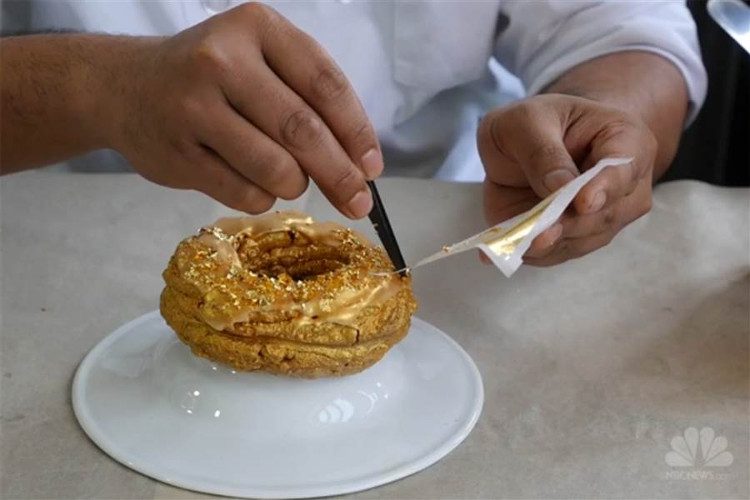
You should consider before trying a dish garnished with gold.
Moreover, if you consume impure gold, it can be truly harmful, as some gold salts are extremely toxic and can be lethal if accumulated in sufficient quantities.
Therefore, you should think twice before trying a dish garnished with gold. Besides providing temporary pleasure, eating gold offers no real benefits and only wastes money.



















































